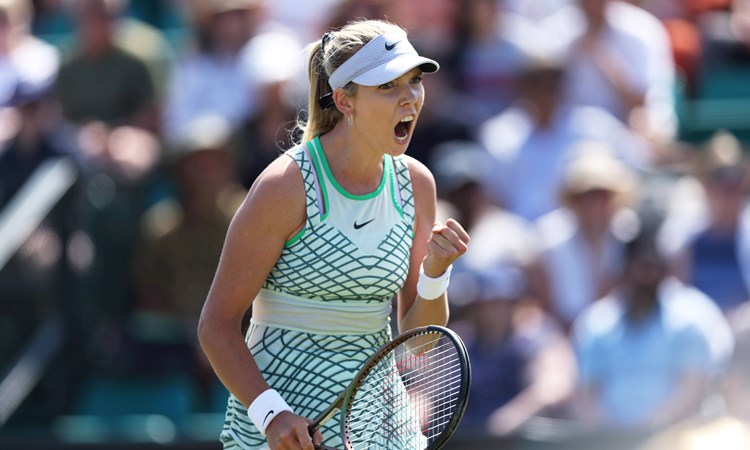
WTA through the decades: Celebrating 50 years of the WTA Tour
• 5 minute read
Today marks the 50th anniversary of the Women’s Tennis Association (WTA), but have you ever wondered how the tour came to be what it is today?
From the birth of women’s tennis thanks to the Original Nine to the present day and historical accomplishments by women’s tennis players across the globe – we take you through all of the key moments as we celebrate 50 years of WTA.
1970s

1970: September 1970 marked the birth of women's professional tennis when nine players signed $1 contracts to compete in a new women's tour, the Virgina Slims Series. Also known as the 'Original Nine' these players included Billie Jean King, Rosie Casals, Nancy Richey, Kerry Melville, Peaches Bartkowicz, Kristy Pigeon, Judy Dalton, Valerie Ziegenfuss and Julie Heldman.
1973: Billie Jean King and the rest of the 'Original Nine' founded the Women's Tennis Association, which would pave the way for generations to come and offer equality between men's and women's tennis.
1974: The computerised ranking era began, with Chris Evert being crowned as the WTA's first official world No.1. 1974 also marked the inaugural Rothesay International Eastbourne event at Devonshire Park.
1980s

1980: More than 250 women were now playing professional-level tennis across the world, in a tour that consisted of 47 global events and offered a total of $7.2 million in prize money.
1982: Martina Navratilova became the first woman to earn over $1 million in a season. Meanwhile King and Ann Jones established what is now known as the Rothesay Classic Birmingham.
1984: The Australian Open joined the US Open in offering the women's event equal prize money.
1988: Steffi Graf became the second woman in the Open Era, after Margaret Court, to complete a calendar year Grand Slam before going on to make it a 'Golden Grand Slam' by winning the Olympic title in Seoul.
My whole life has been about equal rights and opportunities. For me, it really goes back to the health of mind, body and soul.
1990s
1990: With a new sponsor Kraft General Foods on board, the tour's prize purse increased to $23 million. Meanwhile, Navratilova won a record ninth Wimbledon singles title.
1995: The WTA Players Association merges with the Women's Tennis Council to form the WTA Tour.
1997: Martina Hingis became the fastest player ever to win $1 million in a season, before becoming the youngest-ever world No.1 aged 16 years and 3 months.
2000s

2001: The overall tour prize money increased to $50 million across 63 events.
2002: Venus and Serena Williams both became world No.1's - first Venus in February, then Serena in July, with Serena beating her sister in three Grand Slam finals.
2005: Sony Ericsson became the Tour's worldwide title sponsor in a landmark $88 million, six-year deal - the largest and most comprehensive sponsorship in the history of tennis and women's professional sport.
2007: Equal prize money was offered at Roland Garros and Wimbledon, meaning that after a 30-year campaign, all four Grand Slam tournaments offered equal prize money for the first time.
That's what's most special about achieving equality - the positive signal that it will send the world over to the next generation of girls dreaming of winning Wimbledon or becoming a scientist or going to the moon as an astronaut
2010s

2010: 40 years on from the revolutionary Virginia Slims event at Houston in September 1970, WTA prize money increased to an incredible $85 million.
2012: Maria Sharapova lifted her first Roland Garros title to become the sixth woman in the Open Era to complete a career Grand Slam. Meanwhile, Serena Williams defeated Sharapova to seal her career Golden Slam with gold at the London Olympics
2013: The WTA celebrated four decades of growth and achievement since the organization's founding with a season-long campaign named 40 LOVE, showcasing the pioneers and the current stars of the game.
2017: Williams kicked off the year by winning a record-setting 23rd career Grand Slam title at the Australian Open.
2018: Four different players captured the Grand Slam singles titles, including three first-time winners – Caroline Wozniacki (Australian Open), Simona Halep (Roland Garros) and Naomi Osaka (US Open), while a record six players took home more than $5 million in prize earnings as the overall prize money reached $139 million.
2020s

2020: Despite a five month stoppage due to the pandemic, 2020 saw the emergence of the tour's younger stars, with Sofia Kenin becoming the youngest American Slam champion since Serena Williams when she won the Australian Open, while Iga Swiatek clinched a maiden Grand Slam at Roland Garros.
2021: Four different Grand Slam champions were crowned - Osaka (Australian Open), Barbora Krejcikova (Roland Garros), Ashleigh Barty (Wimbledon) and Emma Raducanu (US Open). The 19-year-old became the first Brit to win a Slam since Virginia Wade in 1977 and the first qualifier to win a major.
Present day: 5 decades on from its creation the WTA is now one of the world's most high-profile sports organisations, consisting of more than 1650 players representing around 85 nations. Comprising of over 50 events and four Grand Slams, the WTA has a global audience of over 700 million - a true testament to how far women's tennis has come.




